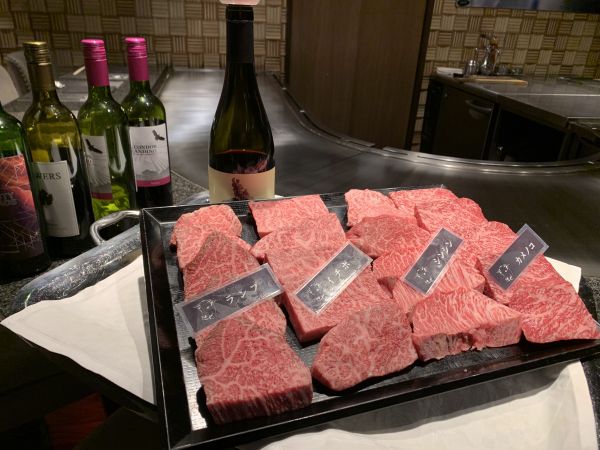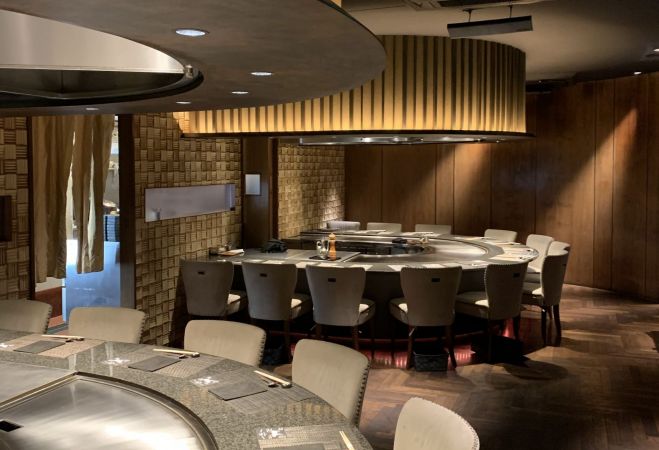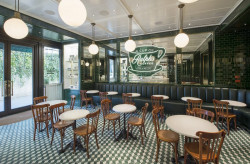
In the heart of Ginza, among skyscrapers and designer stores, awaits the Chuo-branch of Ginza Steak, a high-grade teppanyaki (iron pan grill) restaurant known for, you guessed it, steak. It’s just two minutes from the Ginza Station and, like any fine dining restaurant, Ginza Steak’s interior feels distinctly different from the noisy city just outside: soft jazz music, a wine cellar stocked with the best wines from all over the world, and two large, curved teppanyaki grills, lit under low, golden lighting. Part of the attraction of Ginza Steak is the spectacle of it all. Thirteen people can relax at each grill table, with the chefs on center stage as they prepare the best wagyu beef behind the grill.

The absolute highlight of Ginza Steak is not its elegant ambiance or the live preparation, but something we’ve never heard of: the melt-in-your-mouth A5 kuroge wagyu beef is all-you-can-eat. It sounds crazy as it would simply be too expensive — even sous chef Hiroshi Kobayashi thought the idea insane when first asked to work at Ginza Steak six years ago. Answering people’s dreams of eating as much premier steak as their hearts and bellies desired, Ginza Steak opened to satisfy its customers’ cravings, all while keeping prices reasonable.
The secret to keeping their prices reasonable all lies in how they purchase their beef. Instead of buying specific parts of the beef, say the tenderloin or the fore rib, they buy, quite literally, the whole cow. By working directly with wholesalers, Ginza Steak is able to buy kuroge wagyu beef for a fraction of the price you would pay choosing select parts, as most restaurants do. With this system, customers can enjoy a wide range of kuroge wagyu in an indulgent buffet.

Upon talking about the art of cooking in front of an audience, Chef Kobayashi explains that getting behind the teppanyaki grill is just as much about customer service as it is about skill as a chef. Not only is there no hiding from the customers, you also have to have an eye out for the pace at which they are eating; what they don’t seem to enjoy, if they need a drink refill – truly, anything that would entail the job of a qualified server. As a chef trained in French cuisine, Chef Kobayashi explains that switching to teppanyaki was no simple task. Working in several French restaurants, back when the Japanese culinary world barely knew the difference between Italian and French cuisine and butter was a scarce ingredient, and even studying in France for a couple of months, Chef Kobayashi was present in Japan’s formative years of Western culinary development. Even then, when first training at Ukaitei in the art of teppanyaki prior to arriving at Ginza Steak, he was incredibly intimidated by the intent stares he would be subjected to when standing behind the grill.

Now, several years later and an expert of the iron grill, he is the one to train incoming cooks. One of the main things he warns his team is that there is no excuse for not speaking to the customers. He diligently ensures that each chef is able to explain every part of the beef, and can assess the satisfaction of customers while delivering the perfect steak. When asked how he interacts with foreign guests, he responded that he exerts the utmost care for all customers equally. He finds that, as someone in the service industry, being able to read the physical cues in someone’s body language is a given, and that, regardless of nationality or language, he strives to give the best experience possible to anyone who might step into his restaurant.
There aren’t many places where you can have the best-quality wagyu beef, and lots of it, without breaking the bank. So the next time you’re in the mood for fine dining, and so famished you could eat a cow, take a trip to Ginza for a buffet experience you won’t forget.








